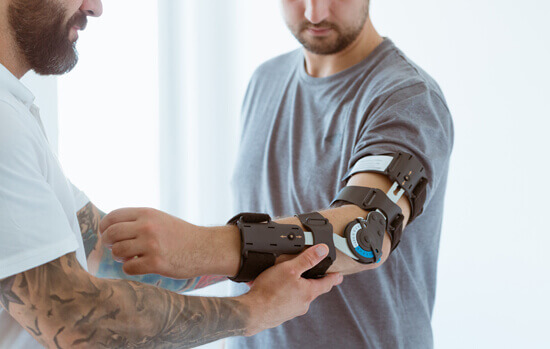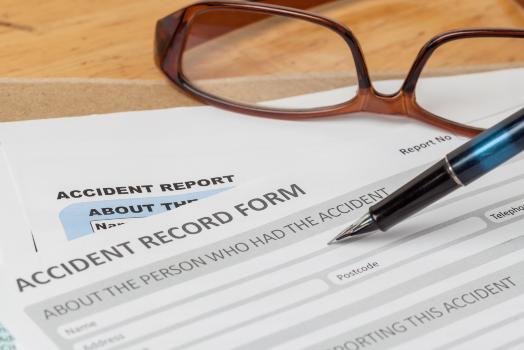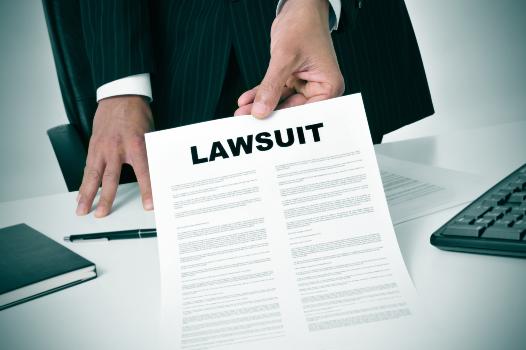Seat Belt Shoulder Injury in Ontario, Canada
Coping With a Seat Belt Shoulder Injury in Ontario, Canada
A seat belt is one of the most important safety devices in any vehicle. In Ontario, drivers and passengers are required by law to wear a seat belt while in motion. While it is essential to wear a seat belt for safety reasons, it can also cause serious injury if used improperly.
Seat belt shoulder injuries are a common consequence of improper use and can be quite severe. It is important to know how to prevent, recognize and treat seat belt shoulder injuries if you or someone you know has been affected.
This webpage will focus on seat belt shoulder injuries in Ontario, why these types of damages happen, how to identify them, how to treat them, and, if you are an Ontario resident, how to seek compensation. What you should do if you experience yourself or have a loved one who has suffered a seat belt shoulder injury.
With the right information, you can be better prepared to protect yourself and your loved ones from potential seat belt shoulder injuries.



Seat Belts Can Cause Shoulder Injuries in Ontario, Canada
How Seat Belts Can Cause Shoulder Injuries in Ontario, Canada
Seat belt shoulder injuries are common in Ontario. These shoulder injuries are caused when the seat belt is not properly adjusted, or the person wearing it is in an awkward position during a car accident.
In Ontario, seat belts are important safety measures used in vehicles to prevent and reduce the risk of serious injury in a vehicle crash. However, drivers and passengers should be aware that seat belts can also cause shoulder injuries in the event of an accident or sudden stop. In Ontario, many people have suffered from such injuries due to their seat belts.
Seat belts are an essential safety feature in vehicles. They can be very effective in preventing more serious injuries in accidents. However, when used incorrectly or if a crash is particularly severe, seat belts can cause shoulder injuries in Ontario.
Shoulder injuries caused by seat belts can vary from minor discomfort to severe pain and even long-term damage. These injuries usually occur when the seat belt isn’t adjusted properly to fit the driver’s body size, and incorrect shoulder strap placement causes it to rest on the neck or shoulder instead of across the chest.
Another reason for this kind of shoulder injury is when the shoulder belt is positioned too close to the neck, which causes excessive pressure on the shoulder joint and surrounding muscles during a collision. People who drive regularly, such as truck drivers or workers with long commutes, are especially at risk for shoulder injuries due to prolonged use of their seat belts.
These shoulder injuries can range from bruising to dislocated shoulders and even fractured bones in extreme cases.
Shoulder injuries due to seat belts can be caused by:
- Failing to adjust the seat belt properly to the size
- Sitting in an awkward position with the seat belt on
- The seat belt tension is too tight
- Not wearing a seatbelt at all
If you do suffer an injury due to a seatbelt, contact a doctor for a medical checkup and with a lawyer for more information on how to pursue legal action. Shoulder injuries can be painful and expensive to treat, so you must get the compensation you deserve for your pain and suffering. You can contact our recommended lawyer for legal advice.



Shoulder Injuries Caused By Seat Belts in Ontario, Canada
Risk Factors For Shoulder Injuries Caused By Seat Belts in Ontario, Canada
In Ontario, seat belts are an important safety feature in vehicles and provide protection from the head, neck, and chest-related injuries in the event of a crash. However, seat belt use has been linked to shoulder injuries. It is important for drivers to be aware of the risk factors associated with these types of injuries so that they can take steps to minimize their risks.
Common risk factors for shoulder injuries caused by seat belts in Ontario include:
- Not adjusting the seat belt properly for size: Seat belts must be adjusted to fit the body appropriately. a too-tight or too-loose seatbelt can cause excessive pressure on the shoulders.
- Sitting in an awkward position with the seat belt on can place undue stress on the Shoulders, which can lead to injuries.
- Seat belt tension being too tight: Shoulder straps should fit snugly, but not painfully tight, against the chest and abdomen to provide adequate protection.
- Not wearing a seatbelt: This is one of the most dangerous risk factors for shoulder injuries due to seat belts in Ontario.
The most common type of shoulder injury caused by seat belt use is called ‘seat belt syndrome’ or ‘submarining.’ This occurs when the lap portion of the belt slips under the abdomen during a crash, causing excessive pressure on the shoulder region, which can lead to serious injury.
One of the most important factors that can increase the risk of shoulder injury from a seat belt is the size and placement of the belt itself. Seat belts come in different sizes and must be properly adjusted for height and weight to ensure that the lap and shoulder straps fit correctly. If the lap belt is too loose or tight, or if the shoulder strap is placed too low, it can increase the likelihood of shoulder injury.
A seat belt should fit smoothly across the hips and chest without being too tight or loose. If the belt is too loose, it can cause the shoulder to be pushed forward in a crash, causing potential injury. On the other hand, if the belt is too tight, it can cause the shoulder to be pulled back, potentially resulting in an injury.
The position of the person wearing the seat belt can also increase the risk of a shoulder injury. When sitting in the car, the person should be properly seated, and the shoulder straps should be placed as close to the shoulder as possible. It’s also important to ensure the person is not leaning forward or to the side, as this can increase the risk of a shoulder injury.
Other risk factors include:
- Incorrect installation or positioning of the seatbelt.
- Wearing a single shoulder strap instead of both belts.
- Using worn or loose seatbelts.
Injuries that can occur due to these risk factors include rotator cuff tears, acromioclavicular joint injuries, and other soft tissue damage. Shoulder injuries caused by seat belts can be painful and difficult to treat, so it is important to take the necessary precautions to keep yourself safe.
By understanding the risks associated with seat belt use, drivers in Ontario can take steps to reduce their chances of suffering a shoulder injury due to seat belts. It is important to ensure that your seat belt fits properly for your body size and is not too tight or loose. Additionally, it’s important to sit upright with the shoulder strap correctly across your chest and abdomen. Finally, always remember to wear your seat belt; not wearing a seatbelt puts you at an increased risk for serious injury in the event of a crash.
If you suffer an injury due to a seatbelt in Ontario, contact a doctor for a medical checkup and a lawyer for more information on how to pursue legal action. Shoulder injuries can be painful and expensive to treat, so you must get the compensation you deserve for your pain and suffering.
- Incorrect installation or positioning of the seatbelt.
- Wearing a single shoulder strap instead of both belts.
- Using worn or loose seatbelts.



Treatment of Shoulder Injuries From Seat Belts in Ontario, Canada
Prevention and Treatment of Shoulder Injuries from Seat Belts in Ontario, Canada
When driving in Ontario, wearing a seat belt is a legal requirement and an important safety precaution. However, as beneficial as seat belts protect occupants from serious and fatal injuries, they can also cause shoulder injuries. These may include bruising, nerve damage or an adverse reaction to the force of the belt on your body. It is, therefore, essential to be aware of the prevention and treatment measures you can take if you experience any shoulder injury due to a seat belt.
Several steps can be taken to reduce the risk of shoulder injuries from seat belts. These include:
- Make sure the seat belt fits properly – Make sure the belt is not too tight or loose. The shoulder should be able to move freely, and the belt should not rub against the shoulder. Too loose can cause your body to move around in the event of an accident and lead to potential injuries.
- Wear the shoulder straps correctly – Ensure the shoulder straps are not over the shoulder but rather under it, as this will help reduce the risk of shoulder injuries.
- Adjust the seat belt height – Ensure that the seat belt is placed at a comfortable level. If it is too high, it can cause pressure on your chest and shoulders while driving.
- Take frequent breaks – a few minutes of rest every hour can help reduce the risk of shoulder injuries from seat belts.
When a car is involved in an accident, the seat belt is designed to spread the force of the impact across the body’s strongest parts. The pressure on the shoulders helps to keep the head and upper body from being thrown forward. In contrast, the pressure on the abdomen helps to keep the lower body from being pushed up and out. In addition, the pressure on the upper chest helps to keep the ribs from being crushed.
When the car comes to a sudden stop, the seat belt will lock, trapping the occupant in place. The pressure the belt places on the shoulders is essential for keeping the head and upper body from being thrown forward, which can cause serious injury or even death. The pressure on the abdomen and upper chest are equally important, as it helps to keep the spine and other vital organs safe.
Treatment for Shoulder Injuries from Seat Belts
Suppose you experience shoulder pain or discomfort after wearing a seat belt. In that case, it is important to seek medical attention as soon as possible. Treating shoulder injuries from seat belts can include rest, ice, and pain medications. Physical therapy or other rehabilitative exercises may be recommended to restore the full range of motion and improve strength. In some cases, surgery may be necessary to repair damaged tissues.
Suppose you have already sustained a shoulder injury due to seat belt use. In that case, treatment options may include rest, physical therapy, or even surgery, depending on the severity of the injury. Your doctor can provide more information and advice on the best treatment for your case.
Suppose you have been injured in an accident due to another person’s negligence. In that case, it is important to contact a lawyer as soon as possible to ensure that you receive proper compensation for your injuries. Shoulder injuries due to seat belt use can lead to long-term effects and pain, and you deserve to be compensated for your suffering.
Our suggested lawyer will be able to provide more information on your rights and options when it comes to filing a claim against the other party involved in the accident.



Seat Belt Shoulder Injury Compensation Claim in Ontario, Canada
Filing a Seat Belt Shoulder Injury Compensation Claim in Ontario, Canada
With the rise of car accidents, seat belt shoulder injury compensation claims in Ontario have become common. Shoulder injuries caused by seat belts are severe and can cause lasting damage to everyday life. Victims need to understand their rights when making a claim to receive the compensation they deserve for their sustained injuries.
In Ontario, laws provide victims with the right to claim damages from an at-fault party or insurance company. a victim can make a claim for medical expenses, lost wages, and other losses resulting from shoulder injury caused by a seat belt during an automobile accident. In certain cases, pain and suffering may also be included as part of these damages awarded.
Suppose you have suffered a shoulder injury due to a seat belt in Ontario. In that case, you must contact an experienced personal injury lawyer who can assess your claim and advise you on the best action. a good lawyer will be able to provide valuable advice on how to prove your case and will be able to negotiate with insurance companies or the other party’s legal team on your behalf.
In many cases, shoulder injury claims due to seat belts are successful. Ontario law requires all drivers and passengers to wear safety belts when moving vehicles. Furthermore, insurance companies must pay reasonable compensation for personal injury claims arising from a car accident, including those caused by seat belts.
When filing a claim for a shoulder injury due to a seat belt in Ontario, it is important to ensure that you have all the necessary evidence to prove your case. This includes medical records documenting the extent of your injuries, proof of the car accident, such as police reports and photographs, and other relevant documents. By gathering this evidence and working with an experienced personal injury lawyer, you can ensure that your claim is successful and receive fair compensation for your damages.
If you have been injured due to a seat belt in Ontario, contact our team of personal injury lawyers today for a consultation. Our experienced legal team will be able to provide you with the advice and guidance you need to ensure that your claim is successful and that you get the compensation you deserve.
Contact us now to learn more about how we can help.Seat belt shoulder injuries in Ontario can be incredibly painful and even disabling. It also can range from minor to severe and can have a lasting impact on an individual’s life. It is important to prevent these types of injuries, such as wearing the appropriate size seat belt and seeking medical attention if damage occurs.
You must take the time to familiarize yourself with the risks and symptoms of these injuries and seek medical attention immediately if any occur. Suppose you suffer from a shoulder injury due to a motor vehicle accident. In that case, it is important to seek legal advice to determine what compensation may be available.



*The laws pertaining to automotive injuries are complex and are constantly evolving. The information on this website was not written by legal professionals and should not be considered legal advise. Please contact a professional personal injury lawyer serving Ontario for the most up to date and accurate information.






